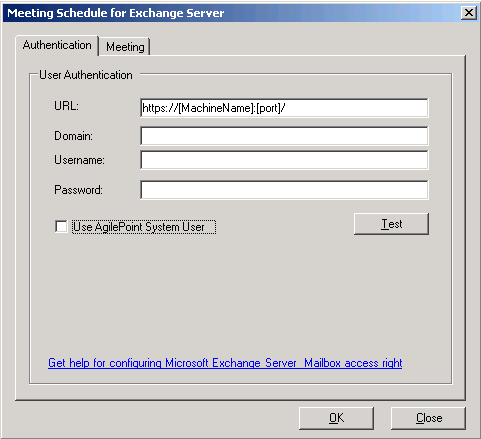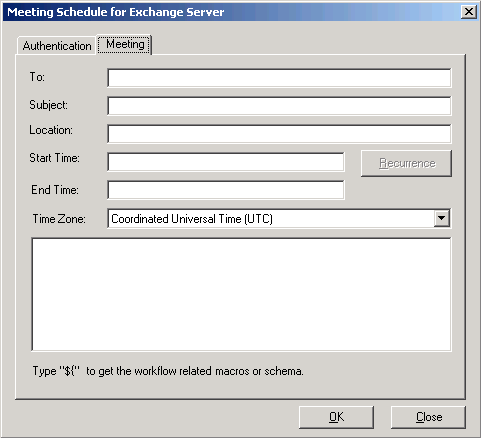
This AgileShape can be used to automatically create a meeting on a user’s Outlook Calendar.
NOTE: This AgileShape is a specialized sub-type of the AgilePart AgileShape. Refer to the documentation for the AgilePart AgileShape for additional information about the properties and behavior that this sub-type inherits from the AgilePart AgileShape.
Design-Time Properties
NOTE: Since this AgileShape is a specialized sub-type of the AgilePart AgileShape, all of the standard properties supported by the AgilePart AgileShape are also supported by this AgileShape. Since they are already documented elsewhere, the standard AgilePart properties are not documented in this section. Refer to the documentation for the AgilePart AgileShape for information about the standard AgilePart properties. Additional design-time properties (other than the standard AgilePart properties) that are specific to this AgileShape are documented below.
Authentication
Specifies the authentication type. This is configured via the Configuration property. You can set the authentication mode to either use the System User, or by specifying the credentials (Domain, User name, and password) for any other user.
Configuration
Specifies the authentication mode to be used to access the Exchange Server and schedule the appointment and the appointment details.

(Authentication) URL
Specifies the Exchange Server URL.
(Authentication) Domain, Username, Password
Determines that a specified account will be used to access the Exchange Server and what the credentials will be.
(Authentication) Use AgilePoint System User
Specifies to use the AgilePoint System User credentials to access the Exchange Server.
NOTE: The credentials and URL can be verified by clicking the Test button. The Test button is disabled if “Use AgilePoint System User” is checked. In both cases, make sure that the user has proper access rights to the Exchange Server.

(Meeting) Subject, Location, Start Time, End Time, Time Zone
The details about the appointment.
(Meeting) Body
The body of the email. Accepts custom attributes and schema by typing ${.